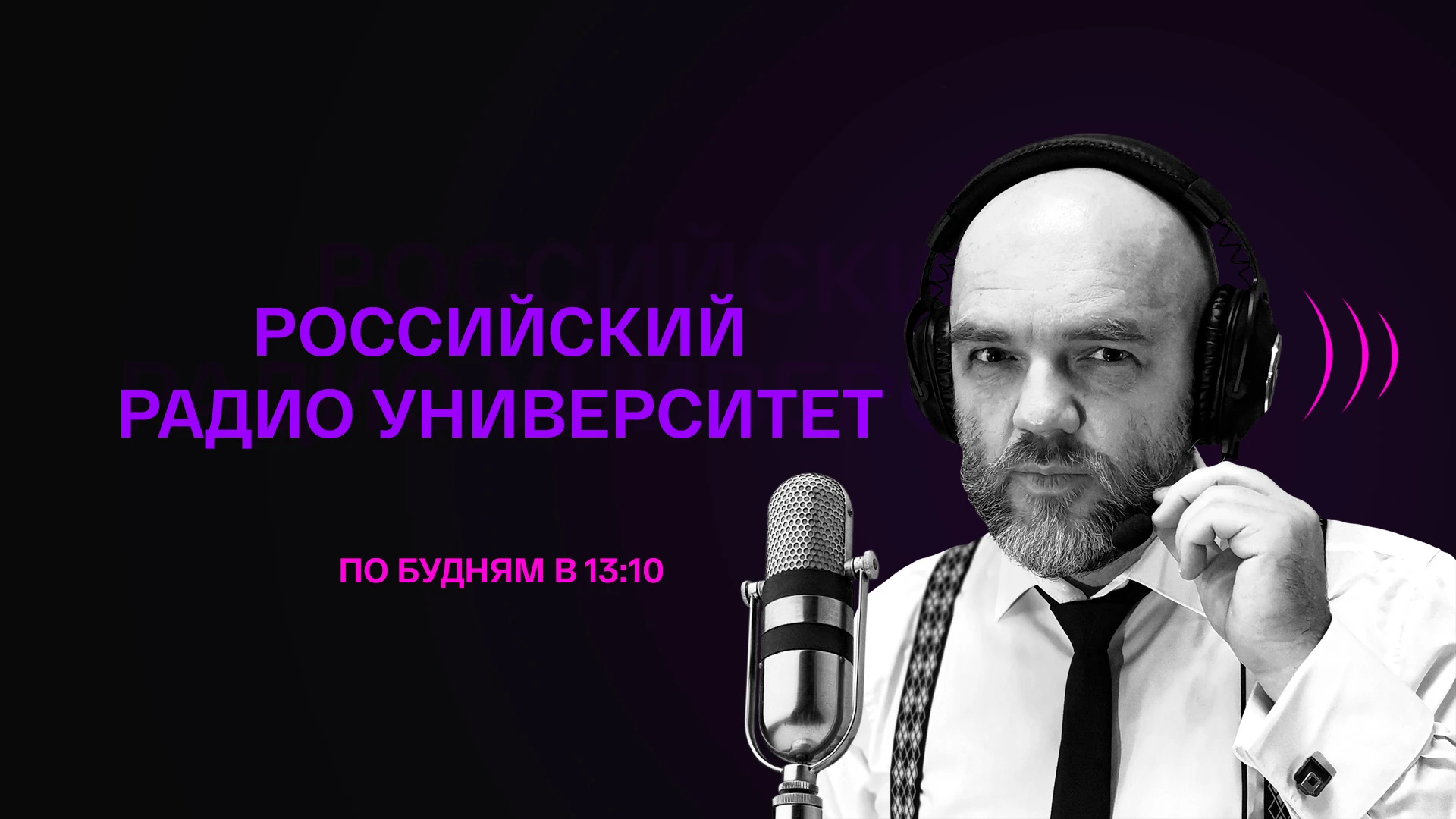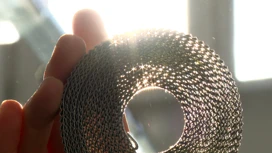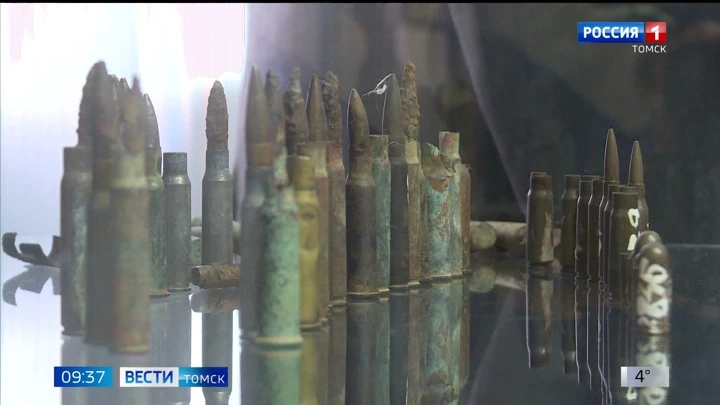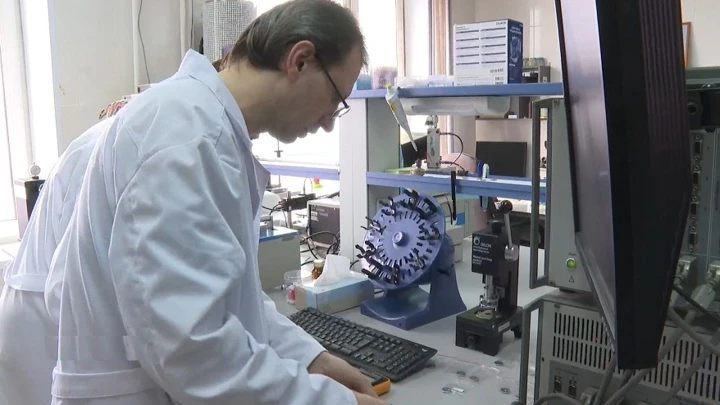Novosibirsk scientists have learned in seconds to obtain high-strength ceramics
Novosibirsk physicists together with Tomsk colleagues have learned in seconds to obtain high-strength ceramics – the material is relevant for many industries from electronics to medicine.


23.02.2025
On the Sun occurred the first in February flash of the highest class

28.02.2025
Drive. Novosibirsk Scientists have learned in seconds to obtain high-strength ceramics

13.03.2025
Russian Radio University Youth of the Far East. Family, Patriotism and Justice

13.03.2025
Russian Radio University Youth of the Far East. Family, Patriotism and Justice

27.02.2025
Green technologies for electricity are developed by Novosibirsk scientists

16.03.2025
Science Hour. Ether from 16.03.2025

03.03.2025
Missing student in Tomsk found in the library of the University

20.03.2025
Drive. Tomsk Ether from 20.03.2025 (09:30)

19.03.2025
Drive. Primorye Know-how of seaside scientists: batteries from algae become a reality

28.02.2025
Question of science Additive technologies

23.02.2025
On the Sun occurred the first in February flash of the highest class

28.02.2025
Drive. Novosibirsk Scientists have learned in seconds to obtain high-strength ceramics

13.03.2025
Russian Radio University Youth of the Far East. Family, Patriotism and Justice

13.03.2025
Russian Radio University Youth of the Far East. Family, Patriotism and Justice

27.02.2025
Green technologies for electricity are developed by Novosibirsk scientists

16.03.2025
Science Hour. Ether from 16.03.2025

03.03.2025
Missing student in Tomsk found in the library of the University

20.03.2025
Drive. Tomsk Ether from 20.03.2025 (09:30)

19.03.2025
Drive. Primorye Know-how of seaside scientists: batteries from algae become a reality

28.02.2025
Question of science Additive technologies
📝 Summary
Novosibirsk physicists together with Tomsk colleagues have learned in seconds to obtain high-strength ceramics – the material is relevant for many industries from electronics to medicine.
Preparation in this case takes much more effort and time than the process itself. The industrial accelerator of the Institute of Nuclear Physics will work on the creation of a new type of ceramics of increased strength and heat resistance. To synthesize a material with unprecedented properties will help fast electrons. The study is conducted under a grant from the Russian Science Foundation together with Tomsk colleagues. “This is the only scientific installation in Russia capable of releasing an electron beam into the atmosphere at energies of 1.4-2.5 megaelectronvolts, the beam power is about 70 kilowatts,” explained researcher at the Institute of Nuclear Physics SB RAS Evgeny Domarov. The output is a beam with a diameter of two millimeters, very powerful and dense - what it takes for the five original metal oxides from the mixture of powders to turn into a single whole. Once the installation is ready to start, you can only observe the process remotely through the camera. Just a second the beam affects the powder, and that is enough. “The mixture is heated above the melting point, the components are mixed evenly, the alloy is formed. In the crystal lattice of the material, the atoms occupy a disorderly position, as a result of which the material has a high hardness, says Mikhail Golkovsky, senior researcher at the Institute of Nuclear Physics of the SB RAS. Traditional methods of obtaining ceramics take hours or even days. The new technology saves both time and energy. The material can be used in industry from electronics to medicine and aviation, applied to the blades of gas turbine engines. But the research isn't finished yet. Tomsk colleagues, who select the composition and proportions of the original powder, in search of new options for different requests and tasks.
 Подписаться на NX Россия
Подписаться на NX Россия
🔗 Share
Новые видео
- Drive. Vologda region Historical event: Arkhangelsk bridge inaugurated in Cherepovets 31.03.2025
- Drive. Experts have calculated the damage from the mass death of fish in the river Losta and Nadeevsky reservoir 31.03.2025
- Drive. Archaeologists continue excavations of an ancient necropolis in the center of Vologda 31.03.2025
- Drive. Production know-how: disposable chopsticks for food began to be produced in Veliky Ustyug 31.03.2025
- Drive. The shelter for dogs “Zooshield” in Cherepovets was on the verge of survival 31.03.2025
- Drive. In honor of the Day of Archaeologist Khabarovsk residents showed the “secret” laboratory and collection of Arsenyev 31.03.2025
- Drive. Vologda region Beat records: the largest mat in Russia was prepared in Cherepovets 31.03.2025
- Drive. Vologda region Air inspector: the first results of patrolling Cherepovets roads quadcopter 31.03.2025
- Drive. Vologda region With love for people: the festival of village cinema "Pechka" was held in the village of Shelota 31.03.2025
- Drive. Vologda region PhosAgro Summer scientific school unites participants of natural science Olympiads from Cherepovets 31.03.2025
- Drive. Vologda region Nikolchanin with his own hands decorates his native village with copies of famous sights 31.03.2025
- Drive. The long-awaited event: the village Gorodishche opened a passenger bus flight 31.03.2025
- Drive. Vologda region “Severstal” will take part in the construction of a nuclear icebreaker 31.03.2025
- Drive. A new line of gas equipment began to produce at the Cherepovets enterprise 31.03.2025
- Drive. Record harvest volumes managed to prepare farmers of Vologda district 31.03.2025
Ähnliche Archiv-News
- On the Sun occurred the first in February flash of the highest class 23.02.2025
- Drive. Novosibirsk Scientists have learned in seconds to obtain high-strength ceramics 28.02.2025
- Russian Radio University Youth of the Far East. Family, Patriotism and Justice 13.03.2025
- Russian Radio University Youth of the Far East. Family, Patriotism and Justice 13.03.2025
- Green technologies for electricity are developed by Novosibirsk scientists 27.02.2025
- Science Hour. Ether from 16.03.2025 16.03.2025
- On the Sun recorded a powerful flash of class M 11.03.2025
- Missing student in Tomsk found in the library of the University 03.03.2025
- Drive. Tomsk Ether from 20.03.2025 (09:30) 20.03.2025
- Decade of Science and Technology in the Russian Federation: key events and achievements in the region 05.03.2025
- Drive. Primorye Know-how of seaside scientists: batteries from algae become a reality 19.03.2025
- Missing 10-year-old boy found in the university library 03.03.2025
- Question of science Additive technologies 28.02.2025
- Tomsk scientists saved Russian toothpaste 03.03.2025
- In Tomsk will install 15 exhibitions in honor of the anniversary of the victory: the list of addresses 28.02.2025